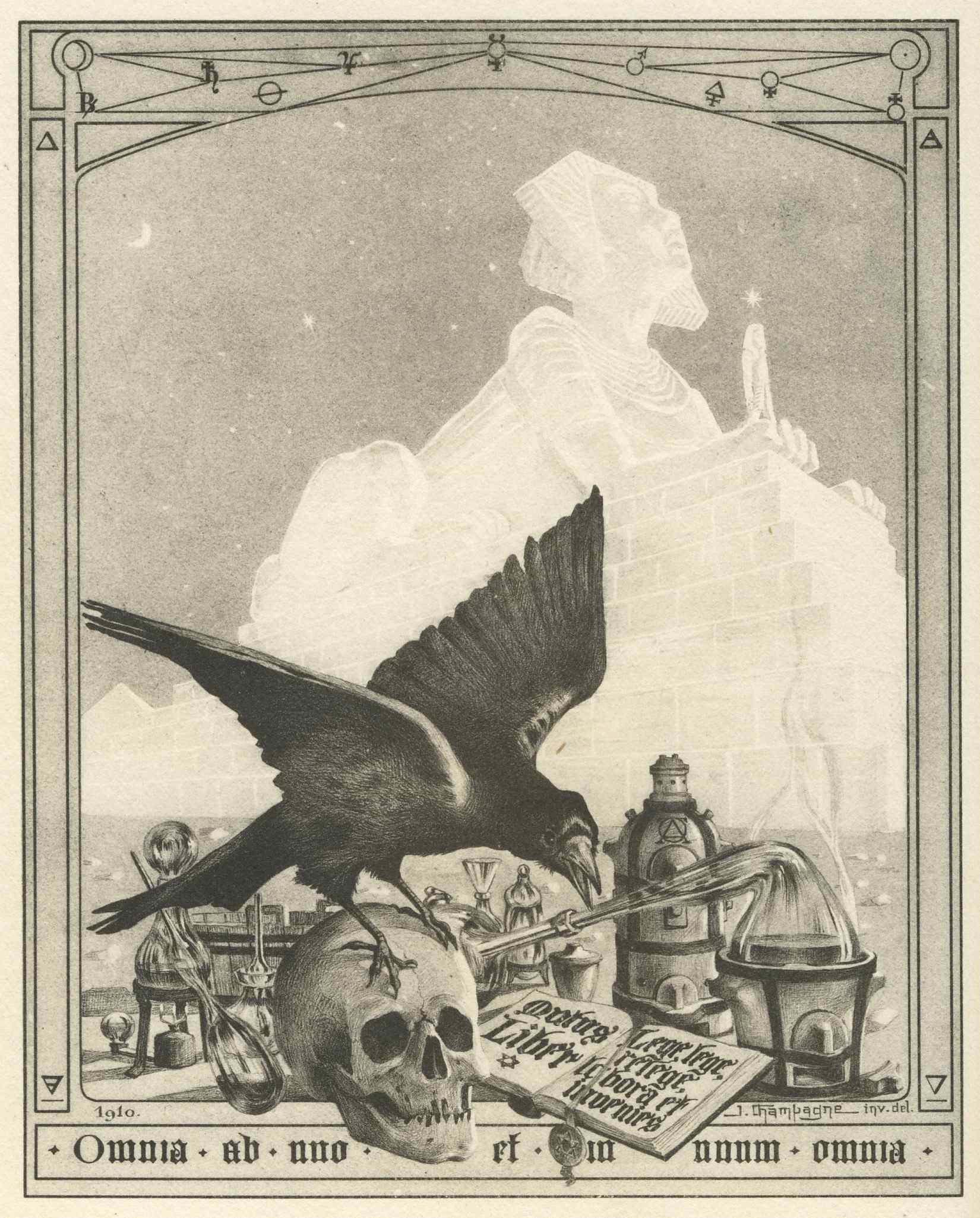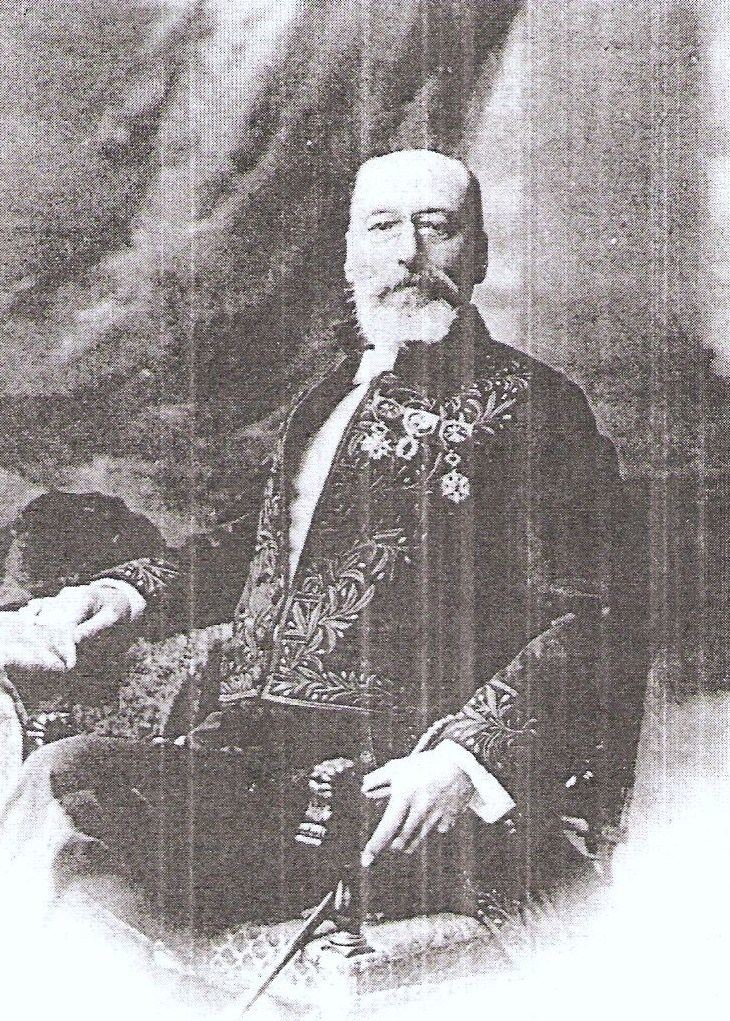The 20th century was a time of scientific discoveries and technological advancements. But amidst these breakthroughs, a mysterious figure known as Fulcanelli emerged, leaving behind an enigmatic legacy that continues to puzzle seekers of ancient knowledge even to this day.

His identity remains a mystery, and his works, laden with hermetic wisdom, continue to inspire and baffle readers. This article delves into the mysterious life of Fulcanelli, his works, and the legacy he left behind.
Who was Fulcanelli?

The name Fulcanelli is a pseudonym, and the true identity of the person behind this name is unknown. Despite the efforts of many dedicated seekers to trace his identity, they have often ended up discovering their own paths rather than uncovering the secrets of Fulcanelli himself.
Fulcanelli’s wisdom is encapsulated in two significant works, namely, The Mysteries of Cathedrals and The Dwellings of a Philosopher.
These books were published after his mysterious disappearance in 1926 and were filled with references to secret ancient knowledge for mastering the material world. Fulcanelli’s teachings have drawn many seekers toward the world of alchemy, inspiring them to believe in the power of their own magic.
Despite his profound impact on the world of alchemy, Fulcanelli remained relatively unknown to English-speaking occultists until the publication of The Morning of the Magicians in 1963. This book introduced readers to the European tradition of alchemy, marking a significant milestone in the history of alchemy.
Alchemy and its role in modern times
Alchemy is the art of transformation, an individual journey that tests one’s ability to overcome limitations. It’s a secret art, rediscovered by a few every century, and only a handful of them succeed. Fulcanelli’s teachings brought this ancient practice to the forefront, showing that it was possible to master one’s life despite all material laws.
In today’s world, the process of alchemical transformation is still as complicated as it was centuries ago.
Despite the plethora of resources available for anyone interested in learning alchemy, understanding the language and mastering the art is an uphill task. However, Fulcanelli’s teachings serve as a guiding light for those willing to embark on this journey.
The morning of the magicians and its revelations
Jacques Bergier, a chemical engineer, member of the French Resistance, and writer, along with Louis Pauwels, authored The Morning of the Magicians. This cult classic links alchemy with atomic physics, suggesting that early alchemists had a deeper understanding of atomic functions than what was officially known.
The book also delves into the connection between National Socialism and occult practices, providing a fresh perspective on Hitler’s atrocities. Bergier and Pauwels argued that the spiritual world, as depicted in occultism, could wield a dark power similar to the material world.
This idea, while present in the collective consciousness, gained recognition only after a series of scientific discoveries and subsequent civilizational mishaps.
As science started revealing its dangerous side, people began comparing it with occult practices. This led to the emergence of new religious and spiritual systems in the West. However, amid all these changes, alchemy remained a rare knowledge, preserved in the dusty shelves of small libraries.
Despite this, alchemy, with its humanistic approach to improving the world by mastering one’s own world, remains close to humanity. It is in this context that Bergier’s accounts of Fulcanelli and his teachings become significant.
Fulcanelli’s warning and its implications
One of the most intriguing stories about Fulcanelli revolves around a warning he supposedly issued about the potential dangers of nuclear energy. According to Bergier, this warning was delivered to him in June 1937 when he was working as an assistant to Andre Helbronner, a renowned French nuclear physicist.
Bergier claimed that he was approached by a mysterious stranger who asked him to convey a message to Helbronner. The stranger warned about the destructive potential of nuclear energy, stating that alchemists of the past had discovered this knowledge and had been ruined by it.
Although the stranger had no hope that his warning would be heeded, he felt compelled to issue it nonetheless. Bergier was convinced that the mysterious stranger was none other than Fulcanelli.
“You are on the verge of success, as are some of our other scientists today. Please, allow me. Be very, very careful. I warn you… The release of nuclear power is easier than you think, and the artificially produced radioactivity can poison the atmosphere of our planet in a very short time: in a few years. Moreover, a few grains of metal can be used to make nuclear explosives powerful enough to destroy entire cities. I tell you this with certainty: the alchemists have known it for a long time… I will not try to prove to you what I am about to say, but I ask you to repeat it to Mr. Helbronner: Certain geometrical arrangements of highly purified materials are sufficient to release atomic forces without having to resort to electricity or vacuum techniques… The secret of alchemy is this: There is a way to manipulate matter and energy to create what modern scientists call a “force field”. This field acts on the observer and puts him in a privileged position in relation to the universe. From this position, he has access to realities normally hidden from us by time and space, matter and energy. This is what we call the Great Work.”
This story was so astonishing that it caught the attention of the American Office for Strategic Services (the precursor to the CIA), which initiated an intensive search for Fulcanelli after the end of World War II. However, Fulcanelli was never found.
The last known appearance of Fulcanelli
The last known sighting of Fulcanelli was in 1954, when his student, Eugene Canseliet, visited him in a hidden enclave of alchemists somewhere in the Pyrenees.
According to Canseliet, Fulcanelli appeared to have undergone an alchemical transformation, displaying both male and female characteristics, a phenomenon known as androgyny.
This transformation is believed to be the final stage of alchemical transformation, where the adept loses all hair, teeth, and nails and grows new ones. The skin becomes younger, the face adopts asexual features, and the person is believed to have transcended the limitations of the physical world.
Following his visit, Canseliet claimed he had only vague memories of his experiences with Fulcanelli. However, his passport bore a Spanish entry stamp for 1954, lending some credibility to his account.
If Canseliet’s story is to be believed, there exists a secret enclave of alchemists somewhere in Spain, carrying on the legacy of Fulcanelli and continuing the practice of this ancient art.
The legacy of Fulcanelli
The enigma of Fulcanelli continues to inspire and intrigue seekers of ancient wisdom. His teachings have ushered in a new wave of interest in alchemy, prompting many to seek the secrets of this ancient art.
Despite his disappearance and the mystery surrounding his identity, Fulcanelli’s legacy lives on in his works and in the hearts of those who pursue the ancient knowledge he propagated.
His teachings continue to guide those willing to walk the path of alchemy, reminding us that the real transformation is not in the metals, but within the experimenter himself.
The story of Fulcanelli is a testament to the enduring allure of the unknown, the power of ancient wisdom, and the potential for transformation inherent in each one of us.
As we delve into the mysteries of alchemy and the secrets of the universe, we carry forward the legacy of Fulcanelli, journeying on a path that merges science and spirituality, matter and energy, the known and the unknown.
Conclusion
The life and works of Fulcanelli serve as a fascinating chronicle of a time when science and spirituality walked hand in hand. His teachings, shrouded in mystery and brimming with ancient wisdom, provide a glimpse into the world of alchemy, a practice that continues to intrigue and inspire even in the 21st century.
The enigma of Fulcanelli remains unsolved, his identity undisclosed, and his whereabouts unknown. Yet, his legacy continues to live on in the hearts and minds of those who dare to seek ancient wisdom and embark on the path of alchemy.
As we explore the teachings of Fulcanelli, we not only delve into the mysteries of alchemy but also embark on a journey of self-transformation, guided by the wisdom of a master alchemist who vanished into thin air, leaving behind a legacy that continues to inspire and baffle seekers of ancient wisdom.




